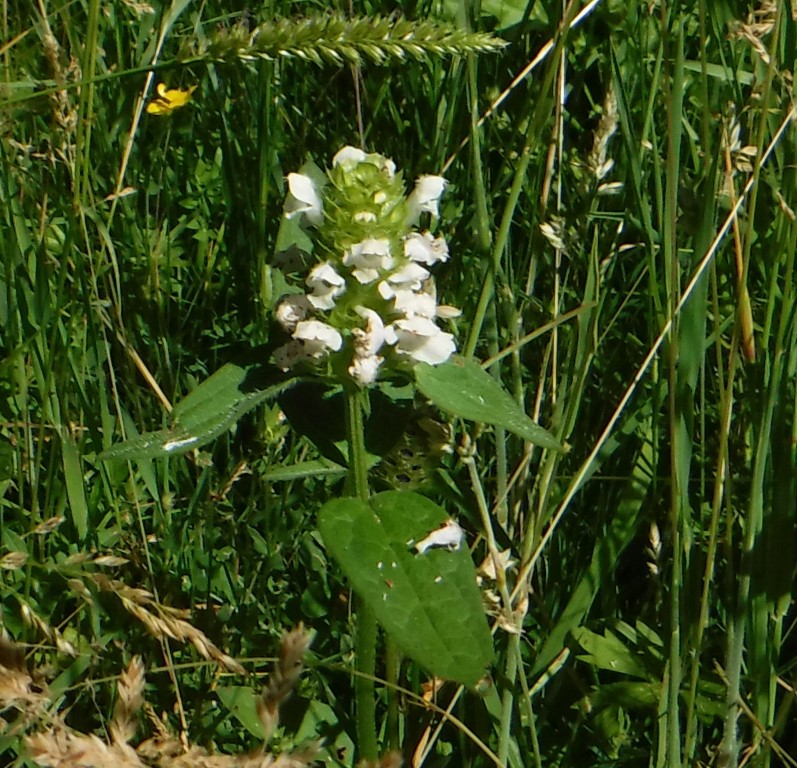
Total monthly rainfall was 4 mm with a maximum daily rainfall of 3 mm on June 7th. There were 3 days with recordable rainfall during the month, and only 12 days with 100% cloud cover during part of the day. The maximum temperature on the warmest day was 29°C on June 26th, while on the coldest day it was 16°C on June 4th. Altogether there were 21 days with 20°C or more.
-
 White selfheal flower
White selfheal flower
White selfheal flower
White selfheal flower
-
 Unusual colour form of the common blue butterfly
Unusual colour form of the common blue butterfly
Unusual colour form of the common blue butterfly
Unusual colour form of the common blue butterfly
-
 Unusual colur form of an emperor dragonfly
Unusual colur form of an emperor dragonfly
Unusual colur form of an emperor dragonfly
Unusual colur form of an emperor dragonfly
-
 Water figwort in flower
Water figwort in flower
Water figwort in flower
Water figwort in flower
https://www.kentfieldclub.org.uk/news/little-barton-farm-wildlife-notes/june-2018#sigProId4fa5d2fbf0
The 20 wildflower first-sightings we recorded this month brought our total to 60 for the year so far. The woody nightshade in our woodland pond on the 2nd was followed by tall melilot, tufted vetch, and wild woodland honeysuckle on the 6th. The 7th produced white clover, before creeping cinquefoil on the 8th, and large quantities of selfheal flowered in our woodland ride on the 11th. Meadow vetchling bloomed on the 14th, together with field bindweed among lakeside rushes then hedge bindweed followed on the 16th. We then discovered dark mullein (17th) and nipplewort (19th), plus agrimony, weld, and marsh willowherb (20th). On the 21st, we found selfheal in an unusual colour-form (white), one of three different species to exhibit this tendency during the month. On the same day we saw yarrow in bloom, and on the 25th marsh woundwort. The last two wildflowers to bloom this month were great willowherb and water figwort beside a pond (29th).This is the first time ever we have discovered water figwort, and we can only assume that it came in on the plumage of a wild duck or similar creature.
The fine weather encouraged 8 more butterfly species to put in an appearance this month. Meadow brown appeared among grasses on June 1st, and vast numbers have followed since. Large skipper, another grass-lover, emerged on the 2nd, then there was a long wait until the 18th, when a very late red admiral, normally one of our earliest butterflies, arrived at last, the same day as our first white admiral appeared beside our back woodland pond. Also, next to the same pond, we found a pristine purple hairstreak just after breakfast on the 26th, perched on bramble in bright sunshine. The 25th produced two more grass-loving species, small skipper and marbled white, with a remarkably smart
silver-washed fritillary to follow in our woodland ride on the 26th. With our annual butterfly total now at 21 species, we should mention another unusual colour-pattern on the 7th, when an extraordinary common blue butterfly turned up next to our lake on the 7th. Seven new moth sightings bring our total to 29 species so far, starting with a brown china-mark moth beside our lake on the 1st, and a common white wave moth on yellow iris on the 3rd. A cream bordered green pea moth on grasses near woodland followed on the 7th then indoors on the 15th we found a common swift moth on bathroom tiles. On the 18th, we disturbed a white plume moth and a blood-vein moth while weeding a gooseberry bush, and finally, on June 26th, we saw a six-spot burnet moth among permanent grasses.
On June 3rd we spotted our first common blue damselfly of the summer. Despite their name they are far from common here, and difficult to spot because of their tendency to remain out over the water, where they are susceptible to swallows feeding their young. On the 15th we spotted the first of many common darters, while on the 19th we found an exuvia for the brown hawker which reappeared over the lake from the 30th onwards. June 23rd was warm enough to entice a male banded demoiselle away from its natural home along the River Beult, and both a male and a female emerald damselfly appeared in separate parts of the lake the next day (24th). On the 26th we found a southern hawker exuvia at our back woodland pond, and also saw our first ruddy darter of the year. A dragonfly was also responsible for producing the remaining unusual colour-form of the month, as, on 2nd June we saw and photographed a female emperor with colours resembling a lesser emperor, egg-laying among the water lilies which it did for two days. The problem is that the nearest recorded site for this somewhat rare species is at Dungeness, and the lesser emperor habitually oviposits in tandem with the male. We now have to hope that we can find a lesser emperor exuvia over the next two years to be able to record it as a lesser emperor instead of an emperor!
Three other insects remain to be mentioned, these being a 24-spot ladybird on hop leaves (7th June), the crane-fly Tipula lunata (new to our site on the 10th), and another crane-fly that looks like Nephotoma quadripharia on the 13th (identified from our photos by Laurence Clemons, with thanks).
Our final record is of a family of blackcaps (which to our shame we thought were great tits!) spotted in our garden Juneberry tree on the 18th by two young bird-watchers who do our fencing and coppicing. We won’t be making that mistake again.
